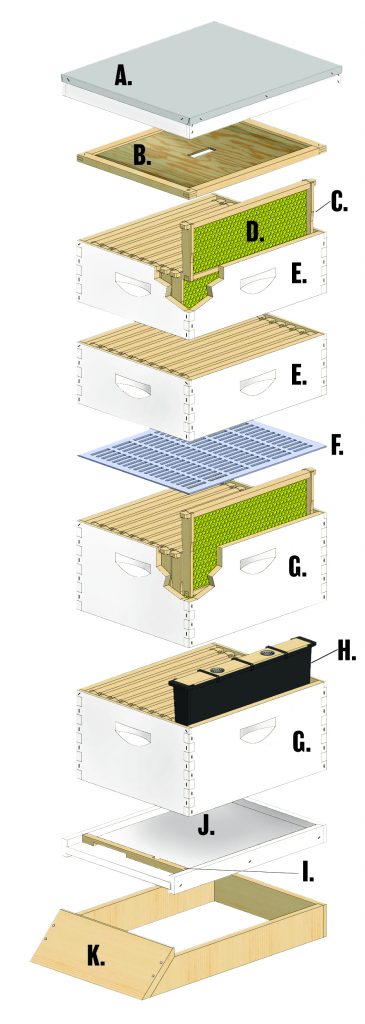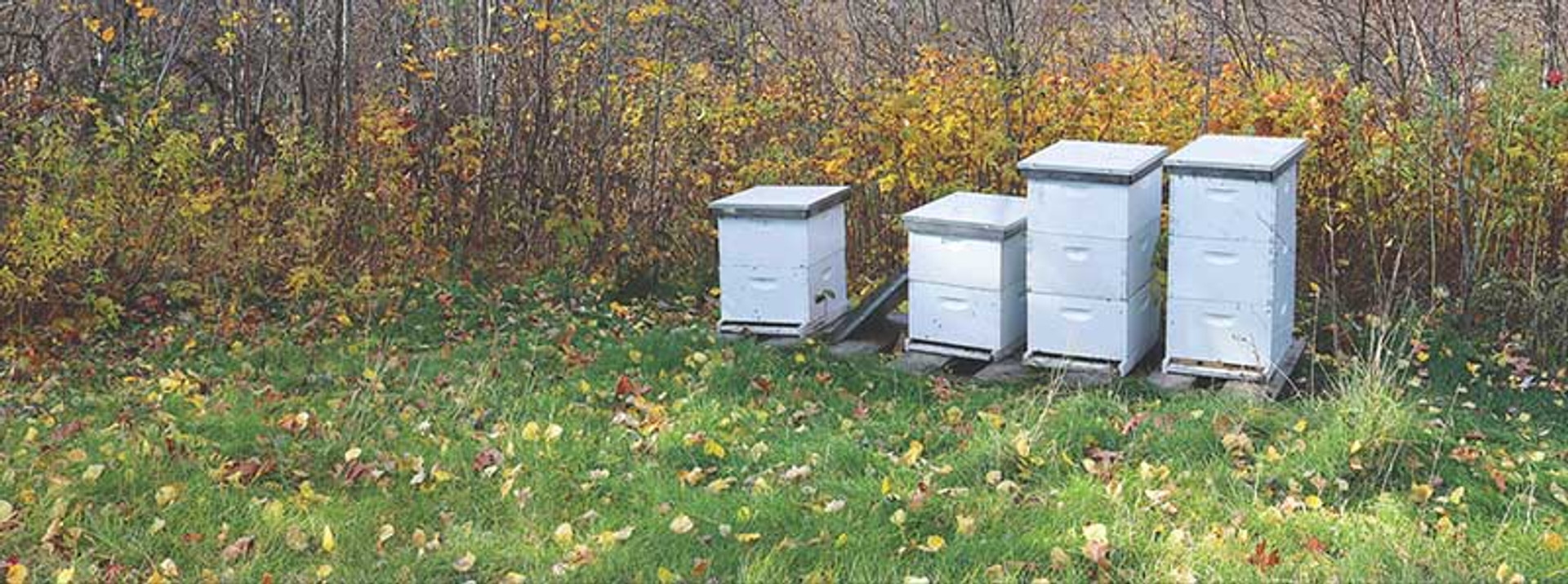Education: The Langstroth Hive Components
The basic 10 frame Langstroth hive typically consists of a hive stand, bottom board, entrance reducer, two hive bodies (for brood), one or two supers (for surplus honey), an inner cover and outer cover. The number of supers depends on the nectar flow and if the colony has supers with drawn comb. The size of your hive is determined by several factors such as location, weather and the health and strength of your colony. It is always a good idea to keep an extra hive on hand in case your colony decides to swarm.

A. Telescoping Cover – Covered with heavy duty aluminum to protect your hive from the elements.
B. Inner Cover – Creates dead air space which insulates against heat and cold.
C. Frame – Each frame consists of a top bar, bottom bar, and two end bars. Pieces are assembled to form a rectangle designed to support honeycomb. Frame depth varies according to the size of the box used. Hive Bodies and Supers can typically hold either 8 or 10 frames. Frames also come in a one-piece all plastic frame and foundation design.
D. Foundation – Sheets of beeswax or plastic embossed with a honeycomb pattern placed in each frame to serve as a base for the bees to make honeycomb.
E. Medium Super – a 6 5/8” (16.83 cm) wooden box containing 6 ¼” (15.88 cm) frames which are used by the bees to store honey. These boxes can also be used instead of the 9 5/8” (24.45 cm) hive bodies as a brood chamber or living area for the bees.
F. Queen Excluder – A device made of plastic or metal which allows workers to pass through but excludes queens and drones; used to confine the queen to a specific part of the hive, usually the brood chamber, so she does not lay brood in the honey supers.
G. Hive Body – A wooden 9 5/8” (24.45 cm) box containing 9 1/8” (23.18 cm) frames which is used as the brood chamber for the queen to lay eggs. Some people prefer to use the 6 5/8” (16.83 cm) size boxes for the brood chamber.
H. Pro Feeder – Takes the place of a frame or 2 and holds sugar syrup.
I. Entrance Reducer – A notched wooden strip used to regulate the size of the bottom entrance.
J. Bottom Board – The floor of a bee hive. Another option is the Varroa Trap With Drawer for Integrated pest management. By removing the drawer the trap can be used as a screened bottom board for extra ventilation.
K. Hive Stand – A structure serving as a base support for a bee hive; it helps in extending the life of the bottom board by keeping it off damp ground. It also provides a landing area for bees.

